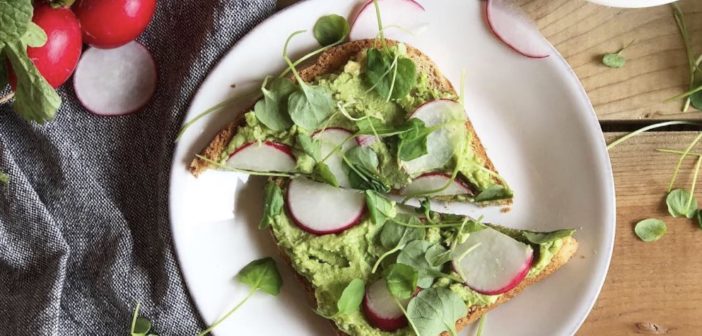After a long, cold, root-vegetable-filled winter, spring produce is finally here. Tons of fruits and vegetables are in season during spring so be sure to snag them while they’re here.
Asparagus
One of the first signs of spring is sprouting asparagus. These green goddesses have a relatively short growing season from April through June, so eat them up while you still can. I love to eat asparagus simply salted, oiled and grilled or blended into a simple soup with some garlic and tarragon.
Onions and leeks
Versatile and downright delicious, onions enjoy a long growing season from April through November, while leeks pop up in May and last through August. Onions are an obvious addition to any dish needing a flavor boost, while leeks offer a subtler flavor that is the perfect addition to dishes with broccoli and cheese.
Peas
Perpetually underrated, peas make their debut in April and stay in season through November, so you can enjoy them during spring, all summer long and well into fall. Whether you want to smash them, blend them into a pesto or toss them in a risotto, peas are here for you.
Greens
From arugula to lettuce to kale to spinach, greens of all kinds come on the scene in late April and early May. Most will only be harvested for a month or two during spring, but don’t worry — they’ll be back for a second act in the fall. Obviously, greens make a great base for salads, but you could also blend them into smoothies, grill larger leaves with salt and oil or top pizzas with smaller greens.
Garlic scapes
One of my favorite overlooked vegetables, garlic scapes are the top ends of garlic bulbs. Gardeners often cut off garlic scapes so that the plant can direct more energy toward growing the garlic bulb itself. Scapes grow in the shape of a curly scallion and offer a pleasant and subtle garlic flavor. Grill these with some salt or throw them in a salad or on a flatbread and you’ll be in spring produce heaven.
Morels
If you’re not familiar, morels are wild mushrooms that have an unusually wavy, brain-like texture. They can’t be cultivated or farmed because they’re too delicate, so a lot of people forage for them in forests. However, mushrooms can be a dangerous business, so don’t go foraging without an expert and don’t trust every person who claims to be selling morels. Instead, buy morels from a trusted supermarket or farmers market vendor. To prepare, simply sauté them with butter and salt for the perfect savory side, or add them to pasta or risotto.
Cherries
This classic summer fruit can be harvested as early as May and will continue to yield through July. Bake them into a pie, make them into a jam or snack on them plain. For a sweeter treat, grab cherries with a darker color. If you want a more tart flavor, which is perfect for pies and jams, go for lighter colored cherries.
Strawberries
Who doesn’t love a good strawberry? These sweet berries are in season for just a few weeks in May and June, so be sure to bask in their glory while they’re here. Whether you put them in a cobbler, pile them on shortbread, top them with whipped cream or munch on them plain, you can’t go wrong with strawberries.
Radishes
Winter is the perfect season for some radishes, like daikon, but for other varieties, like the small red ones, they thrive from May through October. The ideal salad topper, this crunchy vegetable is brightly colored and offers a sharp flavor. To make the most of these, you can also simply sauté them with oil, salt and herbs.
Rhubarb
Long, lean and colorful rhubarb enjoys a relatively long growing season from May through October. Although ‘barb is technically a vegetable, it works perfectly baked alongside berries and other fruits, or baked on its own in sweetened pies and jam. A word of warning: rhubarb leaves are poisonous, so be sure to only use the stalks and discard the leaves when baking with rhubarb.

